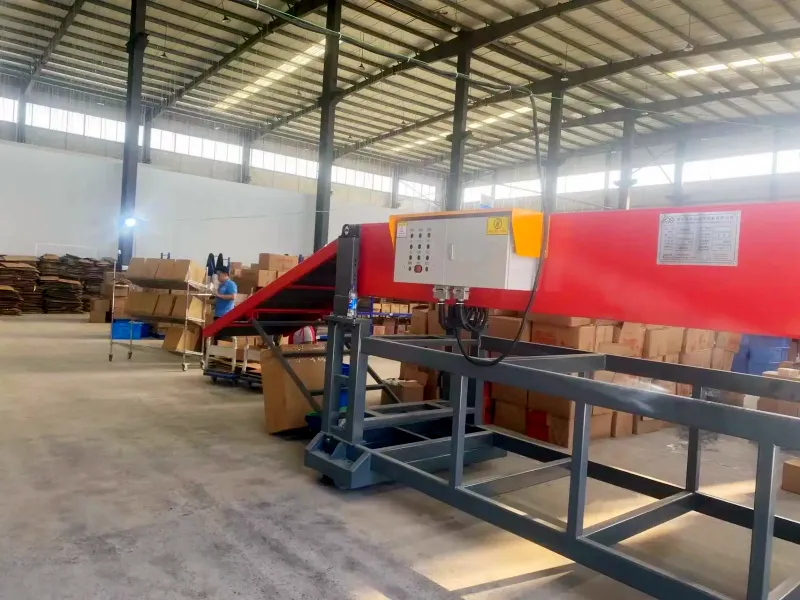
Conveyors for Loading Cartons into Truck Container
In the fast-paced world of logistics, efficiency is paramount. Conveyor systems for loading cartons into truck containers are vital tools that streamline operations, reduce labor costs, and enhance safety. This guide delves into every aspect of these systems, from types and benefits to maintenance and future trends, providing a comprehensive resource for businesses looking to optimize their loading processes.
What is a Conveyor for Loading Cartons?
A carton handling conveyor for loading cartons into truck containers is a mechanical system designed to transport cartons from a loading dock to the interior of a truck. These truck loading conveyors can vary in design and functionality but typically feature components such as belts, rollers, or flexible segments that facilitate the smooth movement of goods.
Importance of Conveyor Systems in Logistics
Conveyor systems play a crucial role in logistics by significantly improving the efficiency of loading and unloading operations. They help in reducing the time and labor required to move goods, minimizing the risk of injury, and ensuring that products are handled with care.
Types of Conveyors for Loading Cartons
- Roller Conveyors
Roller conveyors are one of the most common types used in loading docks. They consist of a series of rollers that allow cartons to be easily pushed along the conveyor path. They are ideal for handling large volumes of goods and can be powered or gravity-driven. - Belt Conveyors
Belt conveyors use a continuous belt to move cartons. They are highly versatile and can handle various shapes and sizes of cartons. Belt conveyors are particularly useful for moving goods over longer distances within the loading area. - Flexible Conveyors
Our flexible roller conveyors can be expanded, contracted, and curved to fit different loading environments. They are portable and can be easily adjusted to suit different loading tasks, making them highly adaptable to varying space constraints. - Telescopic Conveyors
Our telescopic belt conveyors extend and retract to reach the interior of a truck container. They are perfect for maximizing efficiency in loading and unloading processes, allowing workers to load cartons directly into the truck without excessive movement.
Benefits of Using Conveyors for Loading Cartons
- Improved Efficiency: Conveyors drastically reduce the time required to load and unload trucks, enabling faster turnaround times and increased productivity. This efficiency gain can be particularly significant during peak shipping periods.
- Reduced Labor Costs: By automating the movement of cartons, conveyors reduce the need for manual labor, leading to significant cost savings. Workers can focus on other tasks, such as quality control and inventory management, enhancing overall operational efficiency.
- Enhanced Safety: Conveyors minimize the physical strain on workers, reducing the risk of injuries associated with lifting and moving heavy cartons. They also create a more organized and safer working environment by reducing clutter and streamlining operations.
FAQs About Carton Handling Conveyor For Truck Loading
1. How does a conveyor system improve loading efficiency?
A conveyor system improves loading efficiency by automating the movement of cartons, reducing the time and labor required for manual handling. This leads to faster loading and unloading processes, increased productivity, and reduced operational costs.
2. What are the maintenance requirements for conveyor systems?
Maintenance requirements for conveyor systems include routine inspections, cleaning, lubrication, and troubleshooting common issues. Regular maintenance ensures smooth operation, extends the lifespan of the system, and prevents costly breakdowns.
3. Can conveyor systems be customized for different industries?
Yes, conveyor systems can be customized to meet the specific needs of different industries. Customization options include adjusting load capacities, incorporating automation technologies, and configuring the system to fit the available space and workflow.
4. What safety measures are necessary for operating conveyor systems?
Safety measures for operating conveyor systems include worker training, emergency protocols, safety guards, and barriers. Ensuring that workers are knowledgeable about the system and its potential hazards helps prevent accidents and injuries.
5. How do I choose the right conveyor for my needs?
To choose the right conveyor for your needs, assess your specific requirements, consider budget constraints, evaluate the available space, and consult with experts. Selecting a system that aligns with your operational goals ensures optimal performance and efficiency.
6. What are the cost implications of installing a conveyor system?
The cost implications of installing a conveyor system include the initial purchase price, installation expenses, and ongoing maintenance costs. However, the long-term benefits of improved efficiency, reduced labor costs, and enhanced safety often outweigh the initial investment.
Carton handling conveyor systems for loading cartons into truck containers are essential tools for modern logistics operations. These portable conveyors improve efficiency, reduce labor costs, and enhance safety, making them a valuable investment for businesses of all sizes. By understanding the different types of conveyors, key features, installation processes, and maintenance requirements, you can choose the right system to meet your specific needs and stay ahead of industry trends.


Leave Me Your Requirement!